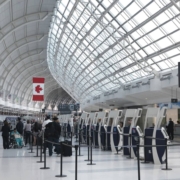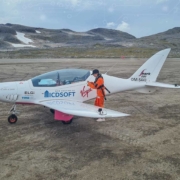Ready to Fly is now a reality
The International Air Transport Association (IATA) has been working on a project called One ID, under the premise of allowing passengers to arrive at the airport “ready to fly”. This means that they will be able to completely digitize the check-in experience at airports by implementing a biometric process with zero contact.
The objective of this initiative is to create a more streamlined process with a pre-trip information exchange, where the passenger will have to demonstrate that they meet the requirements for their trip and then identify themselves at established points at airport facilities through biometric recognition.
One Id seeks to standardize the digitization processes of all airlines, airports, and governments to provide a seamless experience that is easy for travelers to integrate and use.
The implementation of this type of technology will provide multiple benefits and clearly, the main one is that now passengers will not have to be confused with a pile of documents. They will have to share only the minimum necessary data with their digital identity for airlines, airports, and governments.
In this way, when passengers arrive at airport facilities, they will already have their traveler data and itinerary, so they can avoid long lines by just presenting themselves to the biometric reader and identifying themselves.
Other stakeholders that will also benefit from this new process are the airlines and airports which will be able to count on the efficiency of the processes and the reduction of time spent on manual identification of each passenger, which will reduce costs by relying on automated systems and focus their efforts on providing added value to their customers.
In terms of security, the One ID system will arguably help strengthen borders and make it easier for governments to receive accurate passenger information, as well as reduce the number of passengers who are inadmissible for presenting inadequate, insufficient, or false documentation.
Currently, many airlines have been working on digitizing these processes that allow passengers to board without presenting physical documentation, but IATA intends to create a standardized system that digitizes the admissibility of each traveler, so that when the passenger shares their “OK to Fly” status with the airline, they can automatically bypass all document checks within the airport facilities.
Ultimately, travelers want and need technology for their trips, to ensure better treatment, more efficiency, better services, and a considerable reduction in the time spent on controls. So they are undoubtedly willing to share their most sensitive information to support the progress that these systems will offer in the future and from which the industry as a whole will benefit.
However, the new standards are focused on protecting the data of passengers, who at all times remain in control of their data and credentials, sharing only verified approvals and without any intermediaries. In addition, this is not mandatory, so it will be an option if the passenger wishes to opt-out of this process and use manual verification.










Leave a Reply
Want to join the discussion?Feel free to contribute!